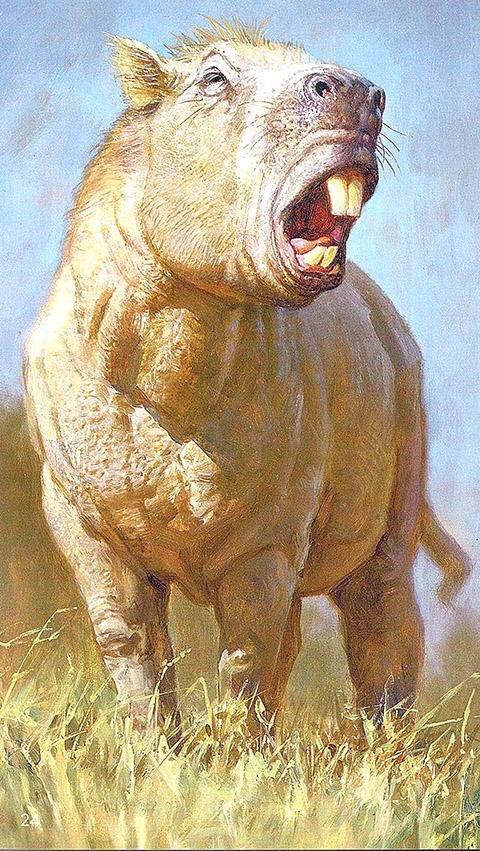The idea of a giant rodent is scary enough, but a giant rodent that uses buckteeth like a battering ram? That's downright terrifying.
According to a study published last week in the Journal of Anatomy, the largest rodent fossil ever found -- the 1-ton-plus South American Josephoartigasia monesi -- had teeth nearly a foot long.
Josephoartigasia monesi is only known by its 20-inch skull, but researchers believe it weighed about 2,200 pounds and stood 5 feet tall.
To determine what the teeth might have been used for, researchers did a CT scan of the skull, creating a computer model of it (and the lower jaw, which they constructed based on related animals). Then they analyzed how much force the jaw would produce during a bite.
Those forces were large -- 1,400 Newtons, which is similar to the force of a tiger bite -- but the resilience of the long front teeth went beyond even that.
The incisors were capable of withstanding forces three times stronger than eating would have required.
That doesn't necessarily mean that the large rodents were getting into scuffles and using their teeth as weapons. But according to study author and University of York researcher Philip Cox, it's likely that the creature's teeth were not unlike elephant tusks.
"We concluded that Josephoartigasia must have used its incisors for activities other than biting, such as digging in the ground for food, or defending itself from predators," Cox said in a statement. "This is very similar to how a modern-day elephant uses its tusks."
SundayMonday on 02/08/2015

